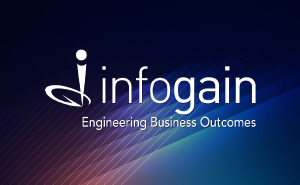- Posted on : January 11, 2022
-
- Industry : Corporate
- Service : Corporate
- Type: News

The following is an industry story featuring Eddie Chandhok, which appeared in BWBusinessworld on 28 December 2021. Follow this link to read the original article.
It is no secret that employers are competing to retain the top talent right now as workers are trying to reshuffle themselves into positions that better align with who they want to be. Winston Churchill, former British Prime Minister’s remark of “never let a good crisis go to waste” had more currency in the past 19 months than ever before.
The phenomenon of the great reshuffle has impacted how organisations across the world now work.
As per a LinkedIn report, globally, the number of postings of remote jobs witnessed a major uptick by more than 3x since the beginning of the pandemic. The number of remote jobs jumped by more than 11x in India, 7x in APAC and 6x in Singapore. Interestingly, the number of sales professionals working remotely has also jumped to 55 per cent in 2021 compared to 2019 when only 35 per cent of sales professionals worked remotely.
Being able to attract and retain the right talent can make all the difference between whether the organisation is going to excel exponentially or fold completely. Companies that are not aligned with the work-life needs of their workers will continue to see a migration of talent.
In the technology sector, workers across India and abroad are now looking forward to shifting to organisations that provide employee satisfaction and more flexibility. The onus is now on the organisations to find ways to attract and retain the top talent.
In a recently concluded roundtable organised by BW Businessworld with some of India’s top leaders associated with the technology sector, the question of how companies can retain employees in the great reshuffle was discussed at length.
There is no existing playbook to tackle this:
There is now an ever-increased demand for labour and broader options are also available for the employees, thus resulting in higher competition for talent. Your talent is going to walk away unless you provide them with the right reasons to stay.
Abhai Singh, India Sales Head & Scaled Customer Business Lead – APAC at LinkedIn said, “What we’ve seen is that ‘The Great Reshuffle’ is making selling complicated right now. The world is in the midst of a ‘Great Reshuffle’ of talent, as job transitions globally are up 28 per cent in the last three months, according to LinkedIn data. And turnover among corporate director-level-and-above – i.e., the mass of B2B buyers – is up 31per cent globally over the last three months.”
Singh, whilst talking about equipping sales teams with the right tools and tech stack and mentioned that, “78 per cent of sales managers agree that the capability to cope with change is more important than it was five years ago and 54 per cent agreed that adding new sales technologies was crucial in the new hybrid selling world.
He also mentioned, “Since we all love stats, I’d like to share the following eye-opening statistics on job change front: Directors+ in APAC are 45 per cent more likely to post a job change in January than other months, Directors+ in India are 36 per cent more likely to post a job change in January than other months and if we look at the United States stats, Directors+ are 61 per cent more likely to post a job change in January than other months.”
Need to encourage internal mobility:
Arun Pattabhiraman, Chief Growth Officer at Freshworks explained that the Great Reshuffle was bound to happen as the pandemic set in and provided time for people to ponder on how they wanted to shape their careers.
Pattabhiraman said, “The pandemic gave employees a chance to sit back and reflect on what they want to pursue in their lives, a very obvious visible outcome of the same is the Great Reshuffle which we can witness across sectors, functions, levels and geographies.”
He highlighted that while Great-Reshuffle is taking place, several measures need to be ensured to retain the company’s talent pool, including internal movement.
Pattabhiraman commented, “We want to ensure that employees have the chance to move within the organisational structure. Our organisation helps employees to understand what they want to do in their career and provide an internal platform within the organisation to switch so that we can prevent employee attrition.”
“In my experience, the right way to retain high-performance talent is by offering opportunities that correctly aligns with an individual’s sense of purpose, and creating an environment consisting of trust and flexibility,” he added.
Pattabhiraman also mentioned the slew of measures his organisation has taken to reduce the attrition rate amongst the younger generation employees.
He said, “At Freshworks, we have adopted a trifecta approach of Learn, Build and Grow to roll out programs that support the new milieu. There are live projects, mentorship networks, accelerated learning immersions, and career paths - all of these are designed to help employees relate to the company’s vision and tailor to their fulfilling careers here.”
Measures to retain top talent in an organisation:
Veda Iyer, Global CMO, Head Sales APAC at Mphasis mentioned a few measures that her organisation has taken to ensure engagement from an employee standpoint.
Iyer mentioned the Talent-Next program that helps employees build skills needed to help its clients.
She said, “The Talent-Next program for us is like Netflix in training, it is hyper-personalised and customised to provide the kind of training that you want. For instance, if an employee currently working on a core IT development project, wants to work on his leadership skills, they are well equipped to do so.”
Iyer also highlighted the Mphasis’ Founder Mindset Program which has been very helpful in training employees.
She highlighted, “Through the Founder Mindset Program which is a program done in collaboration with UC Berkley, we enable and empower employees to be action biased and have an entrepreneurial mindset, it's all about taking charge and ownership of your career"
Iyer underlined that she has seen a tectonic shift in the mindset of employees in the last couple of years. She said, “Both existing and new-talent want to contribute and have a meaningful purpose in what they do, and the goal is to provide them with an overall sense of purpose and achievement.”
Dharmender Kapoor, CEO at Birlasoft stated that it is of key importance to our leadership to retain employees who strive towards achieving the organisation’s vision.
Kapoor said, “We want employees to have the freedom to select when, where, and how they work so that their objectives are matched with that of the organisation. This option allows them to maintain a healthy work-life balance and keeps their learning curve upward.”
He emphasised the need to invest in employees’ professional development.
Kapoor commented, “We provide employees with the opportunity to up-skill themselves within an inspirational business culture. All of this adds up to an employee's understanding of the organisation’s vision for them, as well as the value they bring to the enterprise.”
He also highlighted the importance of the senior leaders interacting with their teams actively. It is the job of a leader to engage team members in developing and growing them to become future leaders.
Training and motivating employees will play a major role:
Sanjay Manohar, MD at McAfee India mentioned that due to the Great Reshuffle we are at a higher risk of losing top talent than ever before, while on-boarding new employees remain challenging.
Manohar said, “The biggest challenge is how we on-board employees effectively. Even with state of the art technology, nothing compares to a face to face interaction.”
“An ideal place for a new joiner to learn is an office environment as that will be more effective in asking questions, making friends and just learning by looking around,” he added.
Manohar also mentioned that he has seen a higher attrition rate amongst employees who joined post-2020 and is hopeful to fix it once the offices reopen. Motivating employees is of utmost importance.
He commented, “Motivating the sales team is a major challenge, and we are forced to get a lot more creative in a remote environment, we give our employees the option to provide feedback, communicate often about sales called expectations. Even then, we risk losing our top talents.”
Predict upcoming attrition by using engagement index:
Nitesh Bansal, COO & President at HTC Global Services came up with a unique solution to predict the upcoming attrition in the company.
Bansal said, “HR would of course report the past 12 month’s attrition index alongside employee performance and productivity. What I now request for is the engagement index.”
He explained the engagement index provides foresight into the upcoming future about the attrition rate in the company.
Bansal explained, “During the pandemic, we increased our people engagement activities such as a virtual chai, happy hours etc. What we noticed was the number of people who actually showed up for the event compared to the total number. Employees who are not looking for change would take part in these activities as colleagues are like their extended family with which they spend time.”
“When people do not turn up for the events, it’s a sure indicator that they are looking for the switch. Though this is not a formal way to predict attrition - it is something which fits the bill,” added Bansal.
Care is indeed the new currency:
Yugal Joshi, Partner at Everest Global suggested that employers need to be more compassionate towards employees and should not see them as monoliths but as individual beings.
Joshi said, “The employer’s value proposition should follow a Maslow hierarchy structure starting from very basics of fair compensation, good policies. Then the softer cultural aspects should be brought forth.”
He mentioned that employees should see the effort which the employers are putting over them as an individual.
Joshi commented, “Employees must feel the employer is invested in their success as individuals and not necessarily only to retain them. Showing a career path, etc. are basics of retaining employees.”
The focus of employees in the post-pandemic era has shifted from earning money to discovering their purpose.
He said, “One does not work anymore just to earn money but to make an impact, the firm should be committed for the same too.”
Joshi also mentioned that customised treatment for high performing employees will be important.
He said, “Building personalised charter for high performing employees will be of paramount importance. Do not treat people as one or assume that everyone needs the same thing, try aligning with their aspirations, and their personal choices.”
A whole new chapter of competition has emerged:
Eddie Chandhok, President – Global Delivery at Infogain stated that the competition for retention of top employees is very acute.
Chandhok said, “Companies which are more attractive, flexible, and provide better career paths, exciting fields are going to attract more talent and grow much faster vis-a-vis companies without it,”
He highlighted that the shift of power from the employer to the employee can bore fruits too.
He commented, “This will make us take everybody much more seriously, when the going gets tough we have to scale up better.”
Chandhok focussed that the attrition by level should be very low. He said, “One place where we are fussy about is – attrition of the framework people. Attrition of architects and deep technical has to be minimal,”
“Volume people will keep coming in and out, we need to find a faster way to bring them to speed. Also, we have to be prepared to live in a world where every 18-24 months people will rotate in and out, with a limited dollar and limited time I don’t think we have the opportunity to retain everybody,” he added.
Prasad Shejale, CEO & Founder at Logicserve Digital remarked, “The way we live, the way we work, the way we shop has changed, and the organisation also needs to change itself,”
Shejale who is also an avid book reader took a leaf from Nassim Nicholas Taleb’s book Antifragile to describe how the book helped his firm to survive and prosper even during the pandemic.
Shejale commented, “The opposite of fragile is not strong, instead it is something which gains or flourishes during a disorder. I have read the book several years back and was able to apply its principles during the pandemic. One needs to have a proper framework to flourish during a disorder.”
The panellists concluded the roundtable by stating that onboarding, upskilling and retaining employees will make all the difference between the success or failure of an organisation during the great reshuffle.








